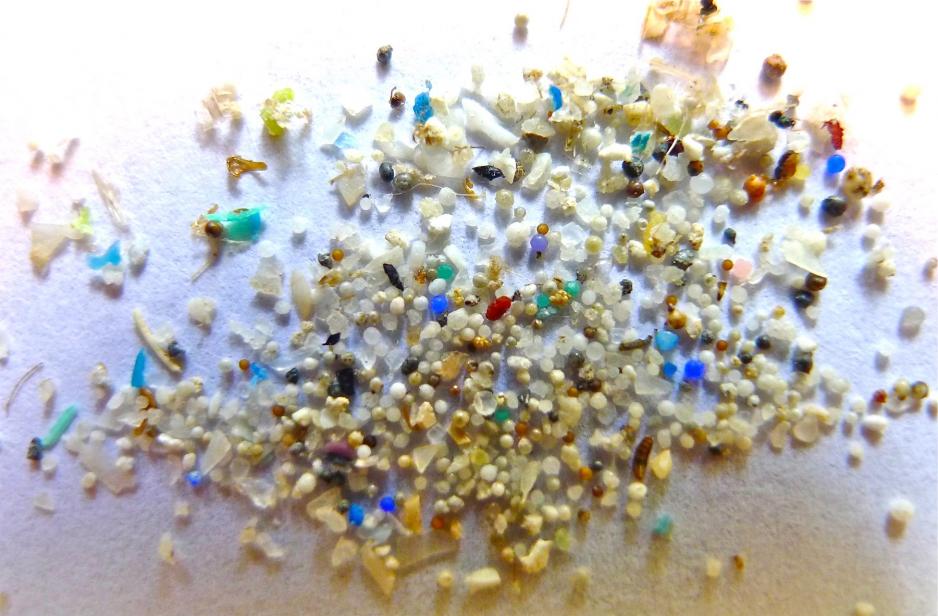Scientists Flag the Arctic’s New Chemical Threats

For decades, wind, river and ocean currents have carried DDT, PCBs and other persistent organic chemical pollutants into the Arctic from industrial and agricultural production elsewhere in the world, creating serious health problems for humans and wildlife as they accumulate in the food chain.
As the effects of these chemicals have become better understood, nations have moved to phase out and clean up many of them under the international Stockholm Convention.
But the substances being used to replace the problem chemicals appear to have just as much potential to travel into the Arctic, where scientists have now identified more than a dozen other burgeoning toxic chemical threats through air and biological sampling. These range from three classes of flame retardants that manufacturers have used to replace similar substances banned under the Stockholm agreement to polycyclic aromatic hydrocarbons, or PAHs, which are formed by incomplete combustion of carbon-rich fuels including oil, coal, natural gas, gasoline and wood.
The new report, one of two environmental reports released on April 25 by the Arctic Monitoring and Assessment Program (AMAP), also notes that the Arctic has not been spared the microplastic pollution now found in many freshwater and marine ecosystems around the world. These tiny plastic particles have been shown in laboratory studies to harm fish reproduction and growth, and can release other persistent contaminants into ecosystems as they degrade.
Some of the emerging chemical pollutants come from within the region itself. Phthalates and siloxanes, common additives to personal care and household products that can disrupt mammalian endocrine systems, as well as pharmaceuticals “are being found at elevated levels near Arctic towns and villages,” the report finds, because local wastewater treatment systems do not filter them out – a problem the Arctic shares with other parts of the industrialized world. A joint study by Canadian and U.S.scientists in 2013 found that most sewage treatment plants failed to remove about half the prescription drug compounds appearing in wastewater.
The environmental and health impacts of these substances are understudied, according to the researchers. “Important information on the toxicity of these chemicals is particularly lacking,” the report notes. “Without knowledge of the potential adverse effects of emerging chemicals on Arctic wildlife and human health, regulatory efforts may be delayed.”
Climate change is magnifying the problem, the report states, as increased snow and ice melt re-release deposits of these pollutants, and alter how they travel through ecosystems. According to AMAP’s latest assessment of Arctic snow, ice, permafrost and water conditions, released with the chemicals report, temperatures have risen so rapidly, and snow, permafrost and ice cover are diminishing so quickly, that the Arctic climate is “shifting to a new state” right before the world’s eyes, one that’s warmer, wetter and more volatile.
The Arctic Ocean could be nearly free of summer sea ice by the late 2030s, according to the assessment, which would change not only the region’s weather, navigation and ecosystems, but weather patterns in mid-latitudes as well.
Arctic ice caps and ice sheets account for just one-fourth of the globe’s land-bound ice, but are responsible for 35 percent of global sea-level rise, the report found. Over two-thirds of that freshwater is flowing off Greenland, where the melt rate nearly doubled to 375 gigatons a year between 2011 and 2014, compared to an earlier period of 2003–2008. That’s the equivalent of a block of ice 7.5km (4.6 miles) tall and wide.
Permafrost has warmed by more than 0.5C (0.9F) in the past decade, with summer thaw reaching deeper in most areas studied. As this trend continues, the Arctic could turn from one of the world’s biggest storage sites for carbon into one of its biggest emitters, as thawing permafrost releases increasing amounts of methane, a greenhouse gas that traps roughly 30 times more heat than carbon dioxide. This new load of carbon pollution could upend efforts to curb rising global temperatures.
“In the last year we’ve seen massive warmer temperatures, and the ice really deteriorating faster than we expected. So we see both continuing long-term changes, and unexpected rapid changes in the last year or two,” said Jim Overland of the U.S. National Oceanic and Atmospheric Administration, during a meeting with reporters. Overland, who has been studying the Arctic for a half-century, was among more than 100 scientists who contributed to or reviewed the assessment.
“Over the next 30 years and onward you’re going to continue to see large changes in the Arctic, regardless of what mitigation is done,” said Overland, referring to the reductions in greenhouse gas pollution to which nations agreed under the Paris climate accord.
But slashing global carbon pollution remains vital, according to the assessment. “It’s a question of slowing the potential impacts,” said Overland. “You’ll be able to slow the rate of change from something that would be almost catastrophic if we don’t have a strong mitigation program in place.”
This article was first published in Arctic Deeply. The views expressed belong to the author and do not necessarily reflect the editorial policy of Arctic Deeply. For important news about Arctic geopolitics, economy, and ecology, you can sign up to the Arctic Deeply email list.
